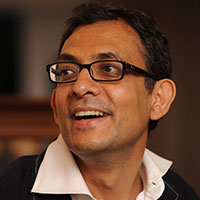The proposed inter-state resource allocation in the upcoming National Food Security Bill is anti-poor. It will result in unequal treatment of equally poor individuals across rich and poor states. This column explains why, and poses some questions for the way forward.
The problem with historical irony is that it is very rarely actually funny. I discovered the latest instance of this general principle in yesterday’s Times of India. There is a long interview with the Union minister for consumer affairs, food and public distribution, KV Thomas, who discusses, among other things, the upcoming National Food Security Bill. Turns out there is now a quite specific plan for it – every state, except the so-called special category states (the small hilly states in the North-east and elsewhere) and two other lucky ones (he didn’t say which) will get enough resources to cover a ‘right to food’ for two-thirds of their population – unless they happen to be one of the 250 Backward Areas Grant Fund districts in which case the share covered would be marginally higher (75% instead of 67%).
This might sound fair, but it is in fact preposterous. It means that rich states will be treated more or less like the poorer ones, and more urbanised states treated just like states where everyone lives in villages. To see how large the differences are between states, based on the 66th round of the National Sample Survey (2009-2010), only slightly less than 90% of the rural population in Bihar and more than 79% of the rural populations of Chattisgarh, Jharkhand, UP, MP, Odisha, Karnataka, and West Bengal – the states where a vast majority of India’s poor live – live under Rs. 35 a day. The comparable fractions for Himachal, Punjab, Haryana and Kerala are below 50% and while I have not checked the numbers, the same must be true in Goa and Delhi. Why should they be treated the same as UP or Odisha? After all this means that Kerala would be able to cover people who live on much more than Rs. 35 a day, while UP will have to exclude many who are below that same cut off. Why should someone equally poor be treated less generously by the Indian state just because she happens to have been born in a much poorer state?
The fallout from the poverty line debate
A part of the answer is clearly politics. The minister of food is from Kerala and he may be under pressure from his state to make sure that they are not left out. But it occurred to me that even if the government wanted to discriminate between states, it really has no basis for doing so. Remember the debate, more or less a year ago, about the poverty line. The Deputy Chairman of the Planning Commission was pilloried for proposing a poverty line that the media and many of the loudest ‘champions’ of the poor felt was insufficiently generous. Some wanted a poverty line set at Rs. 100 a day. The net result of this was to delegitimize the Planning Commission’s efforts to set a poverty line – we are effectively a country now without a poverty line. The trouble is that the poverty line has historically been central to inter-state allocations of anti-poverty programs. The way resources get assigned is based on the share of the poor – states that have a higher share of the poor get more – and for that, we need to define who the poor are. And how do we do that without a poverty line? Indeed the current proposal of more or less uniform treatment is exactly what we would get if we set the poverty line at Rs. 100 – since almost everyone everywhere is poor by that definition, all states should be treated more or less the same. Or in reverse, the lower the poverty line, the more, for the most part, the allocations will tend to favour the poorer states. Hence the irony – the explicitly anti-poor design of the new scheme follows logically from the purportedly pro-poor uproar that followed the Planning Commission’s efforts to set a poverty line (of course I don’t know that this is actually why it is all happening – but my guess is that it has a lot to do with it). Ironic – but not funny.
Let´s get it right
Of course, it could be that this current confusion is actually a divine intercession to force us to reopen a set of important issues that have been shelved. For one, we clearly cannot do sensible anti-poverty policy without some kind of poverty line. But there are obviously a lot more questions. Do we really want a scheme that is so focused on food, given the many difficulties in storing and moving food – as the minister’s interview also emphasises. Can’t we just think of it as a general income support program for the poor, and leave the design to the states? Why not let the states decide, based on their judgments about feasibility and what people want, whether they want to give out food or food stamps, or just skip it all and hand out cash? Would it not be better to stop the truck right now and let the states experiment (and evaluate the experiments) and in the process figure out what they want to do? For one, the current, rather dire, macroeconomic situation is hardly the time to launch a new give away. Even if it is not actually that much more extra money (just because PDS is already so expensive) it sends exactly the wrong signals at a time when our currency is sliding and our credit rating is under siege. I must say that I am not that optimistic, but sometimes good things do come out of muck.




 25 July, 2012
25 July, 2012 




Comments will be held for moderation. Your contact information will not be made public.